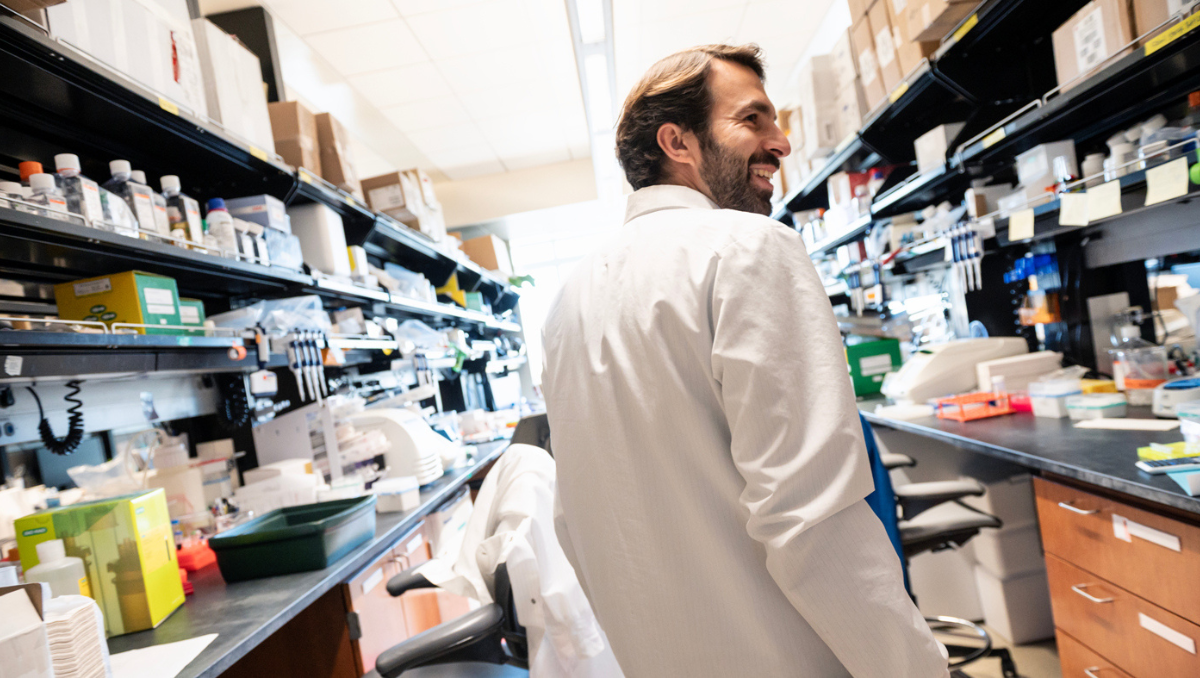T Cell Research Breakthrough by Michelson Prize Recipient Dr. Mamedov Published in Nature
“When I was around the age of 14, I saw a profile in a magazine about an immunologist who was doing exciting work,” says 2019 Michelson Prizes awardee Murad Mamedov, Ph.D. “It was very interestingly framed in the context of this ongoing struggle that is constantly happening in the human body.”
Mamedov’s fascination with this dynamic ultimately narrowed his focus towards T cells, an important set of immune cells that play a vital role in the treatment of infectious and non-communicable diseases. Specifically, his work has focused on gamma-delta T cells, which are much less studied than conventional T cells and are known to be particularly poised to detect and kill tumor cells. His research project, ‘Mapping γδ (gamma-delta) T Cell Receptor Ligands,’ was selected for the Michelson Prize as it had the potential to advance cancer treatment and other significant areas of disease research. In short, it could help the human body have the upper hand in the ongoing struggle Mamedov read about as a teenager.
Now, the University of California, San Francisco (UCSF) and Gladstone Institutes Postdoctoral Scholar is the first author of a new study published in Nature that further elucidates the function of gamma-delta T cells and their ability to recognize and destroy cancer cells.
The team of researchers believe the findings could have a profound effect on the future of immunotherapy treatment. The team includes Mamedov’s fellow 2019 Michelson Prize recipient, Avinash Das Sahu, Ph.D. The pair met after they were awarded the Michelson Next Generation Grants in 2019. They have since combined Sahu’s computational expertise and Mamedov’s findings regarding gamma-delta T cells to further their research—a collaborative approach that has unpacked a complicated problem.
While the ability of gamma-delta T cells to identify and destroy cancer cells is well known, how they do it is far less understood. “We knew that gamma-delta T cells recognize their target cells in a very different way from conventional T cells,” Mamedov says. “But the field has had some trouble figuring out exactly how the gamma-delta T cells were recognizing the cancer cells.”
Mamedov and the team used CRISPR technology—a Nobel Prize winning gene-editing tool—to disrupt thousands of genes in lymphoma cells. The researchers then pinpointed which of these disruptions were causing gamma-delta T cells to recognize and kill the cancer cells.
The research confirmed that the recognition by gamma-delta T cells was due to molecules called butyrophilins. However, as Mamedov says: “We needed to know how the butyrophilins are regulated and what makes them different in some cancer cells.”
A closer inspection found that cancer cells experiencing depleted energy production and greater cellular stress produced a greater number of butyrophilin molecules on the cell surface, making them a more likely target for T cells. Building on this discovery, researchers treated tumor cells from cancer patients with a drug that mimics a cell’s stress response. These tumor cells were more easily recognized by gamma delta T cells because of their increased butyrophilins. As a result, the tumor cells were killed more efficiently.
“In healthy cells, butyrophilin is invisible to gamma delta T cells so that T cells don’t start killing them,” Mamedov explains. “But when stress pathways are increased in cancer, the butyrophilins become more abundant and act as a target for gamma delta T cells once these butyrophilins are activated.”
Although there is still a lot of work to be done to translate these findings into treatments, the initial research is very promising. If future therapies can manipulate the levels of butyrophilin on the surface of cancer cells, gamma-delta T cells could become even more effective in the fight against cancer, as well as diseases like malaria and tuberculosis.
The continued success of Murad Mamedov and Avinash Das Sahu in the field of immunology is a testament to their abilities as researchers and reinforces Michelson Medical Research Foundation’s commitment to supporting early-career investigators conducting research that is highly innovative and impactful, with the potential to be applied across many diseases.
Now in its sixth year, Michelson Prizes: Next Generation Grants are $150,000 research grants awarded annually to support promising researchers applying disruptive concepts and inventive processes to advance human immunology, vaccine discovery, and immunotherapy research for major global diseases. For many recipients, the grants provide funding that may not be otherwise available from traditional funding sources to establish the groundwork for future breakthroughs.
The study, ‘CRISPR screens decode cancer cell pathways that trigger ɣδ (gamma-delta) T cell detection,’ is available to read in Nature.
About the Study
The paper, “CRISPR screens decode cancer cell pathways that trigger ɣδ (gamma delta) T cell detection,” was published online by the journal Nature on August 30, 2023. Other authors are Shane Vedova, Jacob W. Freimer, Maya M. Arce, Mineto Ota, Peixin Amy Chen, Vinh Q. Nguyen, Kirsten A. Takeshima, and Kristina Hanspers of Gladstone; Avinash Das Sahu of University of New Mexico; Amrita Ramesh of University of Chicago; Angelo D. Meringa and Zsolt Sebestyen of University Medical Center Utrecht; Anne C. Rios of Princess Máxima Center; and Jonathan K. Pritchard of Stanford University.
The work was supported by the Cancer Research Institute, the Human Immunome Project, Michelson Medical Research Foundation, the National Institutes of Health (R01HG008140, T32GM007281, 5R25HL121037, R01AI155984), the National Science Foundation (2038436), the Astellas Foundation for Research on Metabolic Disorder, the Chugai Foundation for Innovative Drug Discovery Science, the Mochida Memorial Foundation for Medicine and Pharmaceutical Research, Gladstone’s PUMAS program, Oncode-PACT, the Dutch Cancer Society (KWF 11393, 12586, 13043), The Cancer League, the Innovative Genomics Institute, the Simons Foundation, and the Parker Institute for Cancer Immunotherapy.


